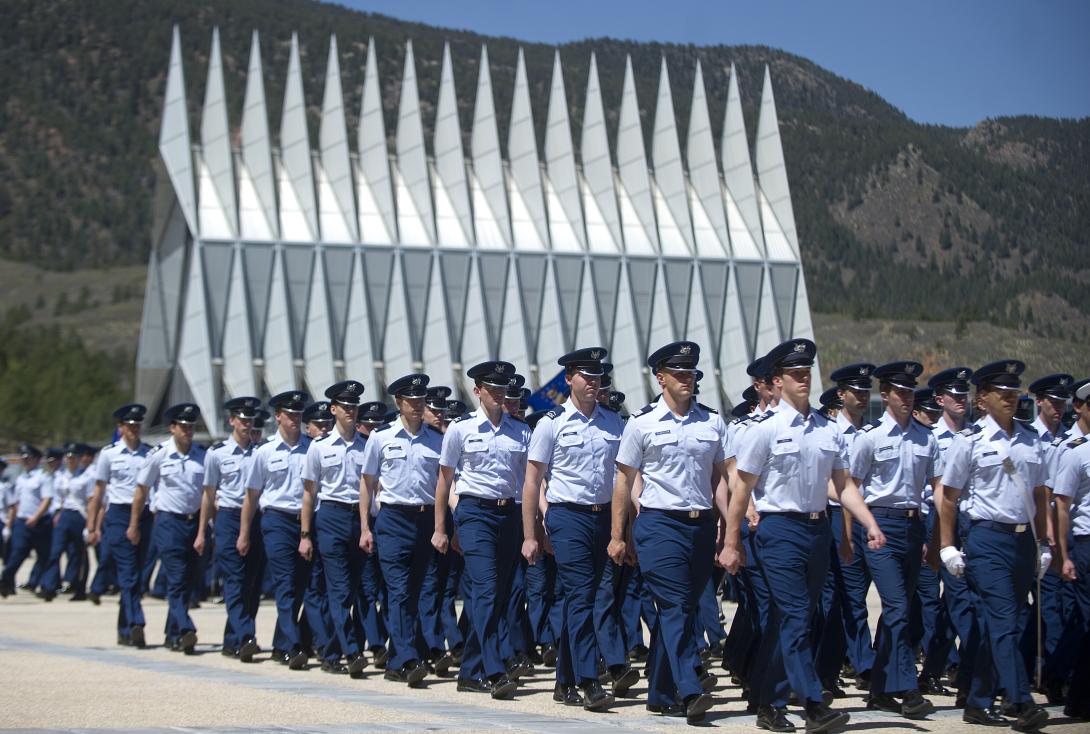Air Force Academy Highlights Cybersecurity Education
The U.S. Air Force Academy (USAFA) is aligning its approach to building the next cadre of leaders with cybersecurity knowledge as an underpinning, said Maj. Gen. Thomas Sherman, vice superintendent, U.S. Air Force Academy, speaking February 11 at the AFCEA Rocky Mountain Cyberspace Symposium.
The offerings at the academy range from cyber computing and range training to cyber mindfulness, the vice superintendent noted.
“From the time of their core curriculum, all of our cadets are being exposed to cyber, whether it is the introduction to computing, whether it is areas of familiarization in cyber warfare, or even down to when we start talking about the theory and aspects of digital warfare itself, from a political science and strategy standpoint, we want all of these cadets to have a sense of familiarization on the multidomain environment that they're going to work in,” Sherman stated. “And this is not only in air-mindedness and space-mindedness, but this helps start to develop that in familiarity with cyber-mindedness.”
The USAFA has several majors that focus on the cyber domain, including computer science, data science, and computer and electrical engineering. The academy is also one of the first institutions to offer a formal cyber science major.
“This major is an opportunity for us to really specialize from the academic realm on a number of cadets that really want to focus on cyber . . . and how they will apply it to the aerospace force,” Sherman explained. “It focuses on everything from offensive cyber to defensive cyber operations. It allows them to do cyber planning with the determination on presenting both kinetic and nonkinetic activities. But also, what we're doing is we're teaching the law, the policy and the ethics of cyber. So this is about developing an officer that has an incredible amount of capability.”
The USAFA curriculum also includes cyber exploitation skills and training in cyber ranges, artificial intelligence, autonomous systems and advanced warfighting.
Under a program called Cyber City, cadets get to experience managing a small city, its water and power resources, supervisory control and data acquisition systems, airport, transportation and other aspects of critical infrastructure to learn broad cyber protections, inherent vulnerabilities and installation resiliency.
Another effort, called CyberWorx, is providing an important arena for cyber experimentation, Sherman continued. The organization allows cadets to examine tough problems and collaborate with government and industry to come up with creative solutions. Cadets also have worked with the service’s cyber arm, 16th Air Force, on some unique cyber defense mechanisms and capabilities, the vice superintendent stated.
“One of the projects that they've been working on recently has been on how to create a better radio system network for pilots,” Sherman described. “If they are potentially shot down, they need to have search and rescue capability. Rather than having an individual hand radio system, the cadets have come up with a design that allows them to weave the radio system into the very flight suit itself, utilizing some very interesting cyber techniques so that the employment of the system and the beacons allow them to be found. And the system is initiated immediately upon ejection.”
From the time of their core curriculum, all of our cadets are being exposed to cyber.
In addition, the USAFA’s Multi-Domain Operations Lab presents an immersive experience in all domains of warfighting. “It is not only for multidomain operations from a joint and coalition standpoint, but it also focuses on what we're doing from a terrestrial standpoint and a cyber standpoint,” Sherman stated. “So we are doing some very unique simulations in which we are allowing them the opportunity to make decisions, develop strategy and employ systems to manage the warfighting scenario that they're operating in.”
This effort includes a collaboration with both the Nellis Air Base’s Red Flag exercise and U.S. Cyber Command’s Cyber Flag. “We've been incorporating cadets from our Multi-Domain Laboratory into that very aspect,” he emphasized. “I think this is a huge step in what we're doing.”
And because the future leaders will face complex operations in a multidomain environment, the USAFA will be growing the cadets’ critical thinking and technical aptitude, Sherman said. This includes skills in agile combat employment, as well as foundational skills, such as mapping.
“Some of the foundational skills that we are working on now are basic warfighting training, which our secretary of the Air Force and secretary of defense are really focused on, that aspect of warfighting and readiness,” Sherman said. “And so we have built that and looked over the last few months into really what is our lexicon on how we are building foundational warfighting training and what does that mean. This means we're looking at aspects of agile combat employment . . . and what we're looking at is teaching them foundational skills, even as basic as map and compass, first aid, combat care, casualty care, employing their weapons systems and becoming comfortable with weapons systems. We also want to then begin to carry that out into how that works in the cyber environment."
The Rocky Mountain Cyber Symposium is organized by AFCEA International's Rocky Mountain Chapter. SIGNAL Media is the official media of AFCEA International.






Comments